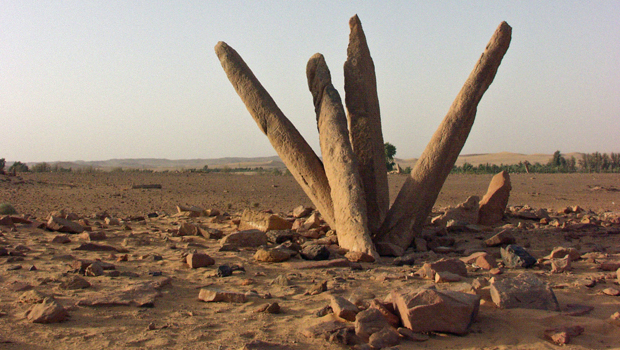Etched with ancient Thamudic graffiti, these monuments to a long extinct culture have maintained their lonely vigil for six millennia. Many have fallen over and others lean at bizarre random angles.
Al-Rajajil (“the men”), the sandstone stele weighing up to five tons each, is popularly called Saudi Arabia’s Stonehenge. They are possibly the oldest human monuments on the peninsula.
Some time in the Chalcolithic, or Copper Age, people living in the area where Al-Jouf is today laboriously erected 54 groups of rudely trimmed stone pillars. Each group contains two to 19 pillars.
At ground level there is no immediately obvious placement of the groups. However, aerial images suggest a rough alignment to sunrise and sunset. There is no positive answer to the question why they are there. An archaeological dig over 30 years ago at the base of one set of pillars failed to turn up any bones or votive offerings, suggesting that religious motives were not the reason.
Political or astronomical reasons are a possibility, though not proven. It is possible that is a landmark for a trade route.
Al-Jouf was a significant stopover point on the trade route from Yemen to Mesopotamia. One trade route, the oldest land route in recorded history, ran from Yemen and parallel to the Red Sea coast through Madinah, Al-‘Ula and Madaen Salih. It turned northeast to Al-Jouf and then north toward Damascus and Turkey.
The Arabian Peninsula and Saudi Arabia in particular has hugely rich archaeological wealth. Much can be definitively written into history, but the standing stele of Al-Rajajil remains an enigma.










